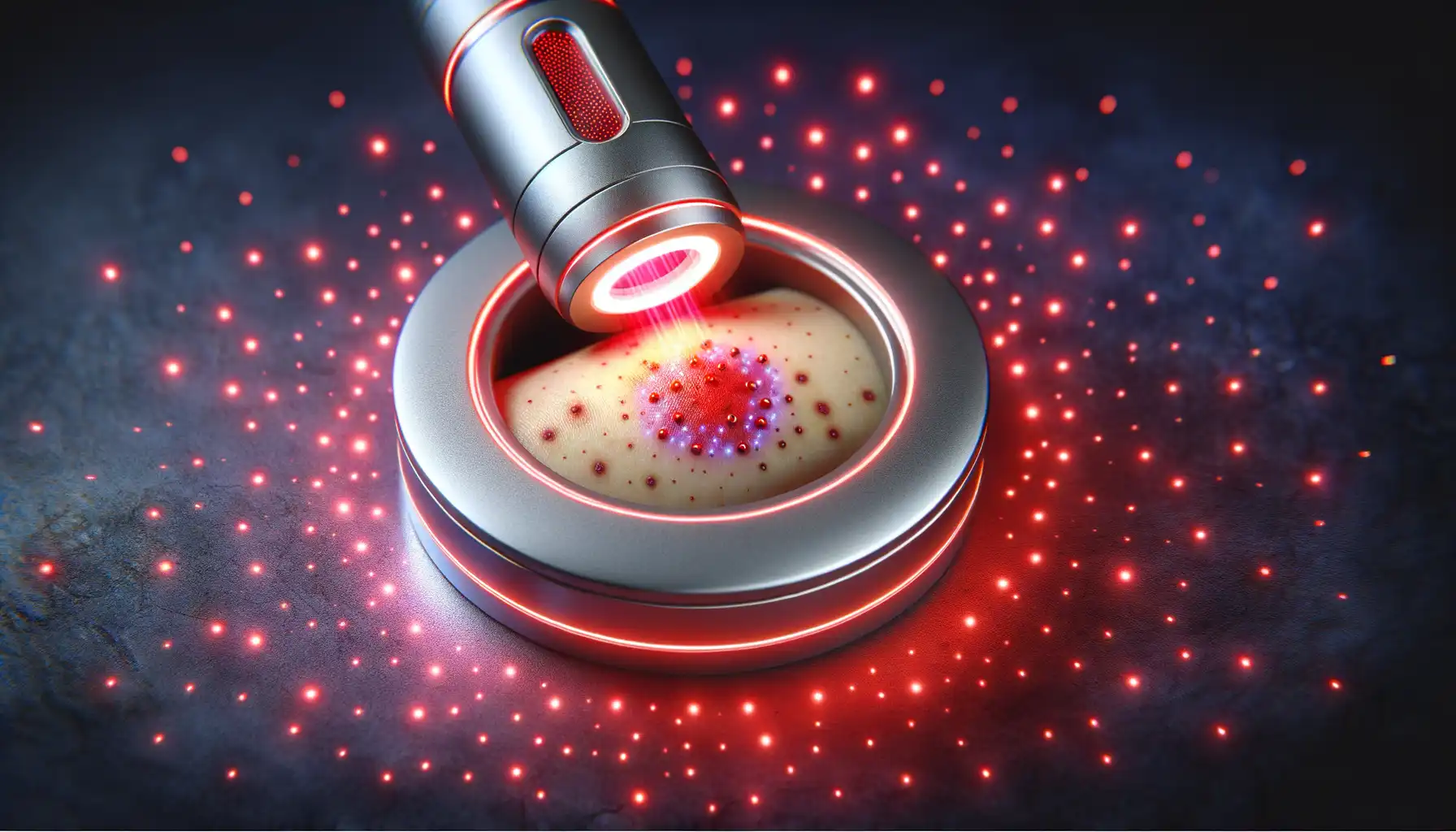It’s a valid concern. The words "infrared" and "radiation" can sound alarming, and it's smart to question what we expose our bodies to. So, let's have an honest look at the science, separating the marketing hype from the evidence-based facts. We'll explore how these saunas work, examine the potential risks like infrared sauna cancer and EMF exposure, and discuss how to use them safely.
What Are Infrared Saunas Anyway?
Before we can talk about risk, we need to understand what we're dealing with. An infrared sauna is different from the traditional Finnish-style saunas you might picture.
Traditional Saunas vs. Infrared Saunas
A traditional sauna works by heating the air around you. It uses a stove—electric or wood-fired—to heat rocks, which then radiate heat into the room. The air temperature can climb to 180°F (82°C) or higher. You feel hot because the hot air heats your skin.
An infrared sauna, on the other hand, uses infrared heaters to emit light that directly warms your body. It doesn't need to heat the air to the same extreme temperatures. Instead, it operates at a more comfortable 120-150°F (49-66°C). The infrared waves penetrate your skin, warming you from the inside out. It's a more targeted and efficient way to produce a deep, detoxifying sweat.
This fundamental difference makes infrared saunas more accessible for those who might struggle with the intense heat of traditional saunas. Many people find them more comfortable and easier to tolerate, making regular sessions more achievable.
The Infrared Spectrum: Near, Mid, and Far
Infrared light is part of the electromagnetic spectrum, just like visible light, radio waves, and microwaves. It's the same type of heat you feel from the sun on your skin, but without the harmful ultraviolet (UV) rays. Infrared is broken down into three types:
Near-Infrared (NIR): The shortest wavelength that penetrates the skin's surface. These are often used in therapy for skin rejuvenation, wound healing, and cellular repair. Some therapies, including certain medical devices, use NIR for its targeted effects (NIH).
Mid-Infrared (MIR): These wavelengths penetrate a bit deeper, potentially helping with muscle pain relief and improved circulation.
Far-Infrared (FIR): The most common type used in saunas. Far-infrared waves penetrate the deepest, raising your core body temperature and inducing a strong sweat.
Understanding how each type interacts with the body is key to debunking the infrared sauna cancer myth. Importantly, none of these forms of infrared are considered ionizing radiation, meaning they do not have enough energy to change or damage your DNA (FDA).
The Big Question: Infrared Radiation and Cancer Risk
Let's get straight to the point. The word "radiation" is what scares people. But not all radiation is the same. The key difference lies in whether it is ionizing or non-ionizing.
Ionizing vs. Non-Ionizing Radiation
Ionizing radiation is the dangerous kind. It has enough energy to knock electrons out of atoms and molecules, which can damage your DNA and potentially lead to cancer. Examples include X-rays, gamma rays, and the sun's ultraviolet (UV) rays. This is why we wear lead aprons during X-rays and sunscreen at the beach.
Non-ionizing radiation, which includes radio waves, microwaves, visible light, and infrared light, does not have enough energy to alter DNA. The infrared light used in saunas falls squarely into the non-ionizing category. Multiple health organizations and studies, including the National Cancer Institute, state that low-frequency, non-ionizing radiation like that from infrared sources is not known to cause the type of cellular damage in the body that leads to cancer.
The World Health Organization (WHO) also echoes this position, noting that infrared and other forms of non-ionizing radiation are not classified as carcinogenic in humans. The International Agency for Research on Cancer (IARC), a WHO agency, has not classified infrared radiation as a carcinogen either (IARC Monographs).
Evidence and Ongoing Scientific Review
The question of long-term effects from repeated sauna exposure has been studied, mostly because saunas are such an integral part of Finnish and Northern European culture. In countries like Finland, decades of research—with thousands of study participants—have failed to uncover any cancer connection with sauna use.
Based on current scientific understanding, there is no credible evidence to suggest that the infrared light itself in a sauna causes cancer or increases cancer risk.
What About EMFs and Infrared Sauna Safety?
Another common concern is electromagnetic fields, or EMFs. All electronic devices, from your phone to your microwave to an infrared sauna, emit some level of EMFs. The issue is not unique to saunas and is present in everyday life.
This is a legitimate area of discussion. Some research has looked into potential links between high EMF exposure and health problems, though large-scale population studies have not shown a clear connection to cancer. The World Health Organization (WHO) affirms that evidence to date does not confirm health consequences from low-level EMFs. The National Institute of Environmental Health Sciences (NIEHS) similarly summarizes ongoing research, stating that while research continues, no clear link to human disease has been established.
Still, there are best practices to minimize EMF exposure for anyone with concerns:
Choose low-EMF or ultra-low-EMF saunas. Many reputable manufacturers design products with this in mind and provide third-party certifications.
Keep other electronics away from the sauna to avoid cumulative EMF exposure.
Limit session times if you remain concerned, especially if you use a sauna frequently.
Reading scientific reviews and position statements—like those from the Centers for Disease Control and Prevention (CDC) and various national radiation safety authorities—will help ensure you have the latest, unbiased information.
Infrared Sauna Safety: What the Research Says
While the infrared sauna cancer risk appears to be unfounded, the evidence for its benefits and other health risks is growing and deserves a closer look. Let's dig a little deeper into both the positives and potential drawbacks.
Cardiovascular and Circulatory Health
One of the most strongly supported health benefits of sauna use (both traditional and infrared) is its effect on cardiovascular health:
A major Finnish study published in JAMA Internal Medicine found that more frequent sauna use was linked with a lower risk of cardiovascular disease and sudden cardiac death.
Saunas help widen blood vessels, improve circulation, and stimulate the heart—in moderate, safe ways comparable to light exercise. This can temporarily lower blood pressure and reduce arterial stiffness (Harvard Health).
Muscle Recovery, Chronic Pain, and Inflammation
The deep, penetrating heat of infrared saunas can:
Boost blood flow to fatigued or injured muscles for faster healing.
Soothe chronic pain, including symptoms from arthritis, fibromyalgia, and joint stiffness (PubMed).
Reduce inflammation and muscular tension, contributing to faster athletic recovery or post-injury rehabilitation.
Supporting Mental Health and Stress Relief
Don't underestimate the psychological benefits of regular sauna use. Infrared saunas:
Offer a relaxing, quiet environment that can reduce cortisol ("stress hormone") levels.
Foster better sleep quality for many users.
May offer mood-lifting effects, as routine heat exposure is linked to positive changes in neurotransmitter levels in the brain, as reported in neurological studies.
Detoxification and Immune Support—Fact vs. Fiction
Wellness advocates often claim that "infrared saunas detoxify the body." The reality is a bit more nuanced. Sweating does eliminate some heavy metals and toxins, but your liver and kidneys do most of the detox work. Still, regular sauna goers sometimes report feeling less achy and more energized. For those with certain health conditions—like chronic fatigue or toxin exposure—this gentle, consistent sweating can be an important supportive therapy. More research is needed here, but preliminary results are promising.
Potential Risks and Side Effects
While the cancer risk is not a concern per the current evidence base, all saunas—including infrared types—do carry some possible side effects:
Dehydration from sweating
Electrolyte imbalances if not properly hydrated
Dizziness or low blood pressure when standing after a session
Overheating (heat exhaustion/heat stroke) with improper use
These risks are easily managed with common-sense practices, but users with preexisting health conditions should be especially careful.
Who Should Be Cautious?
While infrared saunas are generally safe for most healthy adults, they aren't for everyone. Certain individuals should either avoid them or consult a doctor before use.
Pregnancy: It's generally advised that pregnant people avoid saunas, as raising the core body temperature could pose risks. American College of Obstetricians and Gynecologists (ACOG)
Cardiovascular Conditions: While saunas can benefit heart health, anyone with unstable angina, recent heart attack, or severe aortic stenosis should speak with their cardiologist first.
Certain Medications: Some medications can impair your body's ability to sweat or cause you to become dizzy with heat.
Heat Sensitivity or Skin Conditions: People with conditions like rosacea or multiple sclerosis (MS) may find that heat exacerbates their symptoms.
A note of caution: This article is for informational purposes only. It is not medical advice. Always consult with a qualified healthcare professional before starting any new health routine, especially if you have pre-existing medical conditions.
How to Use an Infrared Sauna Safely
To get the benefits and minimize any potential sauna risks, follow these simple guidelines:
Hydrate, Hydrate, Hydrate: You are going to sweat—a lot. Drink plenty of water before, during, and after your session to stay well-hydrated.
Start Low and Go Slow: If you're new to saunas, don't try to be a hero. Start with a lower temperature (around 120°F) for a shorter duration (10-15 minutes). You can gradually increase the time and temperature as your body adapts.
Listen to Your Body: This is the most important rule. If you start to feel dizzy, lightheaded, or unwell, get out immediately. Don't push through discomfort.
Keep it Clean: If you're using a public sauna, make sure it's well-maintained. If you own one, follow the manufacturer's instructions for cleaning to prevent the growth of bacteria.
Choose a Reputable Brand: Invest in a sauna from a company that values safety, uses high-quality materials, and is transparent about EMF levels. Reputable sources like Consumer Reports can sometimes provide independent reviews and guidance on product safety.
Also, periodically check guidance from agencies like the U.S. Food & Drug Administration and the Environmental Protection Agency (EPA) for updates on best practices for device safety and non-ionizing radiation.
Conclusion: A Clear Verdict on Infrared Saunas and Cancer
So, do infrared saunas cause cancer? Based on the extensive body of scientific evidence available today, the answer is no. The non-ionizing infrared radiation they use does not damage your DNA or increase cancer risk. While concerns about EMFs are understandable, choosing a quality, low-EMF unit and using common-sense precautions will effectively minimize worry.
The real conversation around infrared saunas should focus on their scientifically supported benefits—like relaxation, heart health, and pain relief—while recognizing and managing the minor risks. With awareness, moderation, and a few simple safety steps, an infrared sauna can be a safe and rewarding addition to your healthy lifestyle.
Stay informed, stay safe, and enjoy the warmth!



